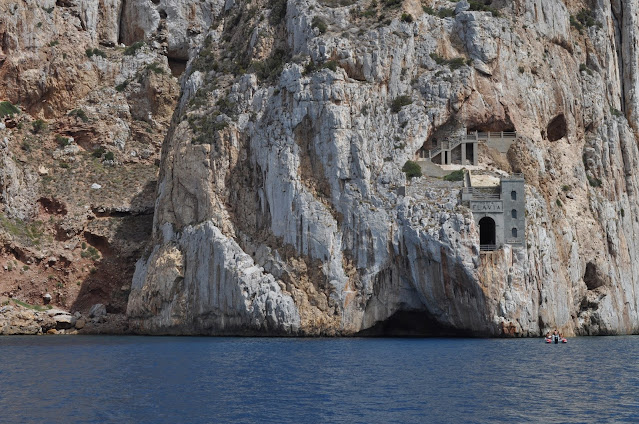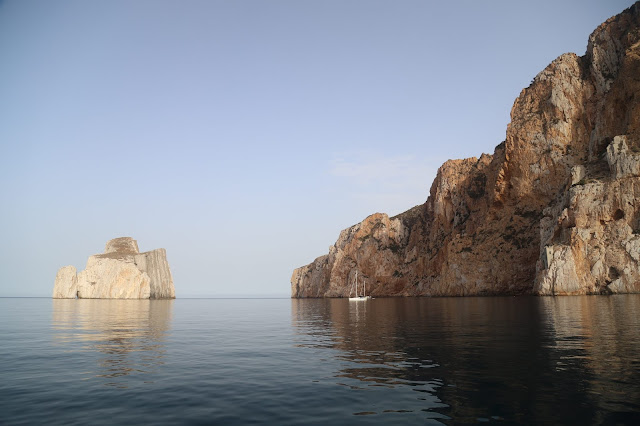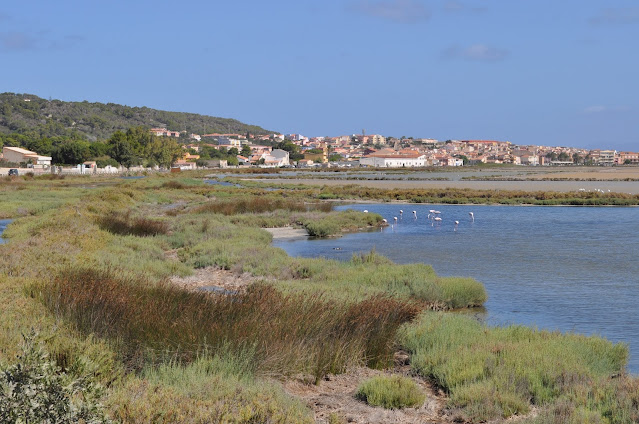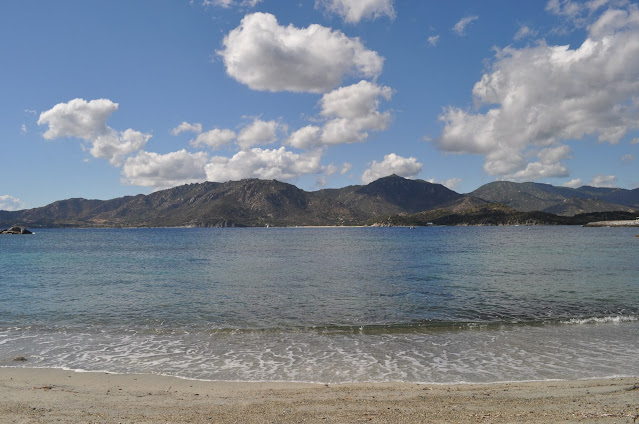August 2020 - Sardinia West and South coast
The west coast of Sardinia is a savage coast, often difficult to navigate when the strong mistral blows and without many shelters.
We left Asinara after a great moon night.
These are our suggested spots:
1. Fornelli passage
2. Grotta di Venere
3. Capo Caccia
4. Port Conte
5. Alghero
6. Bosa Marina
7. Mal di Ventre island
8. Cala Domestica
9. Porto Flavia e Pan di zucchero
10. Carloforte island
11. Porto Scudo
12. Porto Giunco
13. Villasimius
1. First nice passage from Asinara island is the Fornelli; one mile long and less than 80 meters wide with an average of 5 meters shallow waters. Westward follow 301° dromes alignment, eastward 72° alignment.
2. The Grotta di Venere, is a cave reachable only by land climbing down 650 steps. By sea you just can approach it but anchoring is not allowed.
3. Capo Caccia is the culmination of an impressive 15 miles long cliff up to 400m high.
4. Port Conte, a protected large bay just between Capo Caccia and Alghero. Very good holding and 3 sides where to drop your anchor if North Westerly or South Westerly winds.
5. Alghero, a Catalan small town with a good Marina Sant'Elmo (VHF 09 or +39079980829). Among many restaurants Mambrouk is our first choice (ph. +39079970000). Away from the row of restaurants on the ancient walls, hidden in the alleys. You sit down and they do it all ... real Sardinian fish cuisine. Unbeatable for quality and cost. Some dolphins came joking with us.
6. Bosa Marina, actually was a good natural shelter for anchoring but since 2019 is not allowed to drop anchor from 20h00 till 08h00.
7. Mal di Ventre island, a flat long rock to explore...inhabited just by rabbits. Dropping anchor is forbidden but a dozen of buoys are available.
8. Cala Domestica, a small creek where anchoring only with E or SE winds. Nice to snorkel inside the cave.
9. Porto_Flavia in front of Pan di zucchero, is called Porto just because it served as the mineral production hub of Masua in the west coast of the Sardinian Iglesiente area. Built in 1923–24, it is named after Flavia Vecelli, the daughter of Cesare Vecelli, who engineered and designed the harbor.
On the SE side of the Pan di Zucchero (reachable only with the tender) there is the access to a unique Via Ferrata.
10. Carloforte
A must for a real Sardinia descovering. Its historical roots are quite interesting. Carloforte was founded in the 18th century by around 30 families of coral fishers, originally from the Ligurian town of Pegli, near Genoa. They had left their hometown in 1541, and had settled in the island of Tabarka, off the coast of Tunisia, to fish for coral. After centuries, the coral in that area was exhausted[3] and the families, while setting off back to Italy, found there was plenty of coral in the sea off the Sardinian west coast. They asked the King of Piedmont-Sardinia Charles Emmanuel III for permission to settle down on the once uninhabited San Pietro Island instead. When he granted them permission, the island was colonized (1739); the name Carloforte ("Charles the Strong", but also the "Carlo's Fort") was given to the town they then proceeded to found, in the Piedmontese king's honour.
That's why the Carlofortini (Carloforte citizen) speak ligurian and no sardinian dialect.
11. Porto Scudo
Capo Teulada area is a wild area beacause is a military zone, so no one can build houses, go to the beaches ets. So anchoring is not allowed but in some small creek is still admitted, as Porto Scudo.
At sunset the few boats of the day cruisers leave the bay and peace remains sovereign....alone (end of August!).
12. Porto Giunco
Beyond the extreme southeastern tip of Sardinia, known as Capo Carbonara, the island of Cavoli opens navigation to the South East coast of Sardinia which begins with Cala Giunco and the Serpentara island with splendid anchorages (protected only from the N, NW, SW winds ).
13. Villasimius, the extreme Sardinia south bay and harbor. Perfect to relax just before the crossing to Sicily.
In the small harbor we moored beside the multi-victorious IMOCA 50 "Vento di Sardegna" with its skipper Andrea MURA with whom we have made a beautiful friendship. He won 2 times the Ostar Regatta.
Now retired from competitions with two small children, he is preparing to sail around the world but with a comfortable Prestige Catamaran.
That area in summer time is often struck by strong thunderstorm. What happened right after we moored in the harbor. 30 minutes of fear with gusts up to 52 knots!
Now it's time to relax...tomorrow 1st od September we will cross the Sardinia channel headed to Marettimo (Sicily) a 16 hours leg for around 140 nautical miles.



































Comments
Post a Comment
I am sailing let me some time to answer you.
Thks